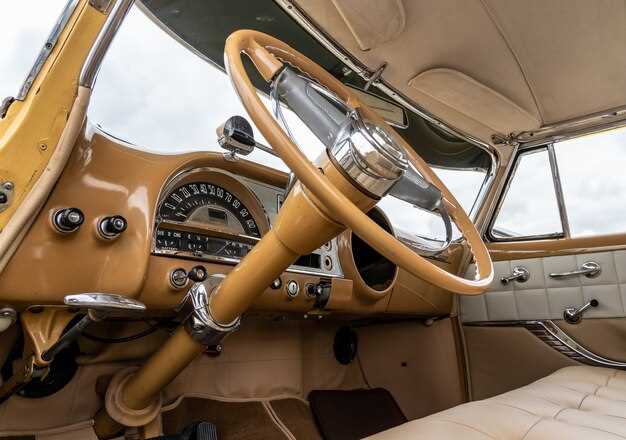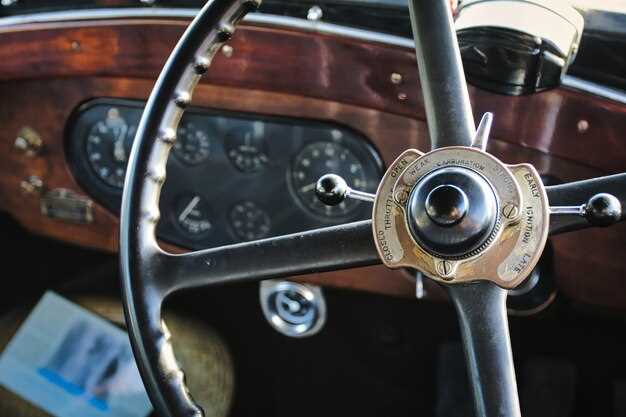
For automotive enthusiasts and collectors, finding genuine vintage steering wheels and gauges is not just about aesthetics; it’s about preserving the heritage and history of classic vehicles. Original parts encapsulate the craftsmanship and design philosophies of their respective eras, making them vital for restoring vintage cars to their former glory. However, navigating the market for authentic components can be challenging, given the prevalence of reproductions and fakes.
Identifying genuine vintage parts requires a trained eye and a thorough understanding of the specific models and years in question. Each component has unique features, markings, and materials that can help distinguish real items from replicas. Enthusiasts must be diligent in their research, utilizing resources such as expert forums, vintage car clubs, and reputable dealers. Engaging with the right community can significantly enhance one’s ability to source authentic vintage steering wheels and gauges.
In this article, we will delve into essential tips and guidelines for identifying genuine vintage steering wheels and gauges. From understanding the unique characteristics of various makes and models to leveraging technology for authentication, we aim to equip collectors with practical knowledge to navigate this niche market effectively.
Identifying Authenticity in Vintage Steering Wheels

When it comes to vintage steering wheels, authenticity is paramount for collectors and enthusiasts alike. Understanding the key components and characteristics of these parts is essential in distinguishing genuine items from reproductions.
Material Composition: Original vintage steering wheels are often made from high-quality materials such as hardwood, leather, or metal. Reproductions may use inferior materials that lack the same feel and weight. Inspect the texture and finish; authentic wheels typically show signs of aging and natural wear.
Manufacturer Markings: Genuine parts will usually feature specific markings or logos from the manufacturer. These can include part numbers, stamps, or decals that are often located on the back of the steering wheel or near the center hub. Researching these markings can provide valuable insight into authenticity.
Design and Dimensions: Vintage steering wheels have distinctive designs that vary by make and model. Pay attention to the dimensions, including the diameter and grip thickness. Many reproductions may alter these specifications, making it easy to spot a fake. Refer to original catalogs or reliable sources for accurate measurements.
Rim Shape and Spokes: The shape of the rim and the configuration of spokes are critical features. Authentic wheels tend to have a specific curvature and proportion that may not be replicated accurately in fakes. Inspect the spoke design for craftsmanship; genuine wheels often exhibit a higher level of detail.
Condition and Patina: While wear and tear are normal in vintage parts, authentic steering wheels should have a certain level of patina that reflects their age. Look for signs of consistent use, such as small scratches or faded areas that enhance their collectible value. Be wary of wheels that appear too pristine, as these may indicate a reproduction.
By focusing on these elements, enthusiasts can more confidently identify authentic vintage steering wheels, ensuring the integrity of their collections and investments.
Where to Source Genuine Dashboard Gauges and Parts

Finding authentic dashboard gauges and parts can be a rewarding endeavor for vintage car enthusiasts. To begin your search, classic car shows and swap meets are excellent venues. Here, you can connect with fellow collectors and sellers who specialize in vintage automotive parts. Not only can you find genuine items, but you can also negotiate prices and assess the condition of the parts in person.
Online marketplaces also provide a vast array of options. Platforms like eBay and Craigslist often have listings for original dashboard components from various eras. Make sure to check seller ratings and reviews to ensure you are purchasing from reputable sources. Joining online forums and communities dedicated to classic cars can lead to valuable leads and recommendations for trusted suppliers.
Specialized antique auto parts dealers or restoration shops are another great resource. These businesses typically have a reputation for authenticity and can offer guidance on sourcing genuine parts for specific models. They might also have connections to manufacturers or collectors who specialize in hard-to-find gauges.
Classic car salvage yards can be treasure troves for authentic parts. Many of these places have vintage vehicles that are no longer operational, and you can find usable dashboard components at lower prices compared to brand new aftermarket options. Always confirm the originality of the parts before making a purchase.
Finally, social media platforms can be valuable tools for sourcing genuine dashboard gauges. Many groups and pages are dedicated to classic car preservation, and members often buy, sell, or trade parts. By engaging with these communities, you can stay updated on available items and get advice from experienced collectors.
Restoration Tips for Vintage Steering Components
Restoring vintage steering components requires both skill and attention to detail. The steering wheel and dashboard elements are often integral to the overall aesthetics and functionality of classic vehicles. Here are some essential tips to help you through the restoration process.
1. Assess Condition: Before beginning restoration, thoroughly inspect the steering wheel and dashboard components for any signs of wear, cracks, or damage. Understanding the current state will help you plan the necessary repairs and refinishing work.
2. Clean Thoroughly: Use a gentle cleaner and soft cloth to remove dirt, grease, and grime. Avoid harsh chemicals that might damage the original materials. For steering wheels, a mild soap solution is often sufficient.
3. Repair Cracks and Dents: Small cracks in plastic or wood can be filled with appropriate fillers. For deeper damage, consider using epoxy resin to restore structural integrity. Ensure that repairs are sanded smooth before applying any finishes.
4. Choose the Right Finish: Selecting the appropriate finish is crucial. Depending on the material, options may include varnish, polyurethane, or specialty automotive finishes that offer durability while matching the vintage look.
5. Reupholster Where Necessary: If your steering wheel has leather or vinyl coverings that are worn or cracked, reupholstering can renew its appearance and feel. Ensure to use original materials or suitable substitutes that match the time period of the vehicle.
6. Focus on Color Matching: Pay close attention to the original colors of the dashboard and steering components. Use automotive-grade paints and dyes to closely match the original hues, maintaining authenticity during the restoration.
7. Final Assembly and Testing: Once all components have been restored and refinished, carefully reassemble them, ensuring all fasteners are secure. Test the functionality of the steering mechanism to ensure everything operates smoothly.
Restoring vintage steering components can be a rewarding project that breathes new life into classic vehicles. By following these tips, enthusiasts can ensure their restoration efforts honor the integrity and style of the original designs.
